Figures & data
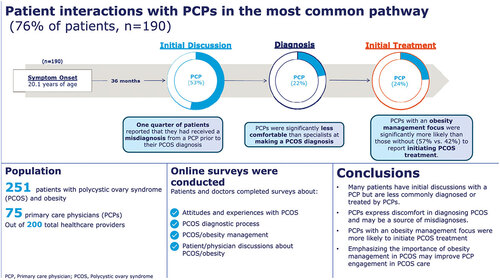
Table 1. Sample characteristics.
Figure 1. Most common pathway for patients with PCOS and obesity (n = 190 or 76% of patients). The ‘pathway’ relates to patients who had initial discussions with healthcare providers, followed by a PCOS diagnosis, and ultimately treatment for PCOS. Abbreviations: HCP, healthcare provider; OB/GYN, obstetrician/gynecologist; PCP, primary care physician.
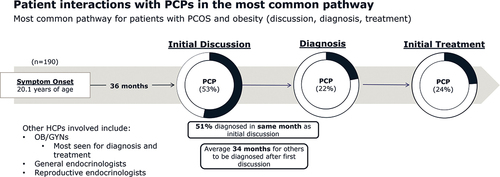
Figure 2. Percentage of all patients (n = 251) with PCOS and obesity reporting that they were misdiagnosed by the indicated type of healthcare providers. Patients could select multiple provider types that reportedly had previously misdiagnosed their PCOS symptoms, and 82 patients reported receiving a misdiagnosis prior to their PCOS diagnosis. Abbreviations: OB/GYN, obstetrician/gynecologist; PCP, primary care physician.
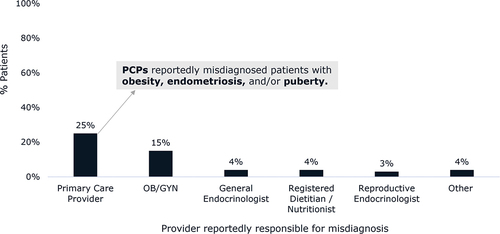
Figure 3. Topics all other healthcare providers (n = 230) and PCPs (n = 75) discuss with patients with PCOS and obesity at the time of PCOS diagnosis. Other healthcare providers surveyed included OB/GYNs, general endocrinologists, and reproductive endocrinologists. PCPs were significantly more likely than other healthcare providers to discuss referral to a specialist for PCOS treatment (p < 0.05). *Brackets indicate significant difference between groups (p < 0.05). Abbreviations: PCOS, polycystic ovary syndrome; PCP, primary care physician.
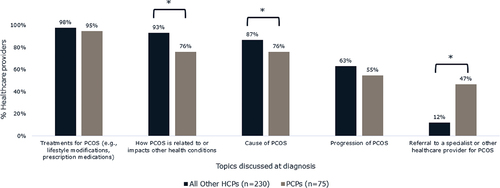
Figure 4. Levels of comfort of all other healthcare providers and of PCPs in making a PCOS diagnosis. Question was asked of HCPs who diagnose some patients with PCOS and obesity. Significantly fewer PCPs felt extremely comfortable making a PCOS diagnosis relative to other healthcare providers. Other healthcare providers surveyed included OB/GYNs, general endocrinologists, and reproductive endocrinologists. *Indicates that the means for PCPs differ significantly from the means of all other healthcare providers surveyed (p < 0.05). Other healthcare providers included OB/GYNs, general endocrinologists, and reproductive endocrinologists. Abbreviations: PCOS, polycystic ovary syndrome; PCP, primary care physician.
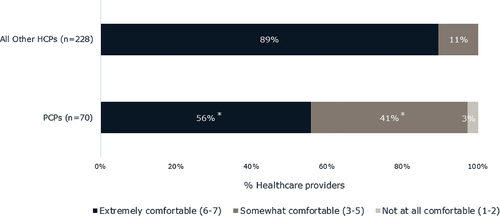
Figure 5. Roles of all other healthcare providers and of PCPs in treating patients with PCOS and obesity. Healthcare providers were asked to estimate the proportion of patients living with PCOS and obesity for whom they initiate treatment, adjust treatment, or refer to someone else for treatment of PCOS. *Brackets indicate a significant difference in the estimates of PCPs compared to all other healthcare providers surveyed (p < 0.05). Abbreviations: PCOS, polycystic ovary syndrome; PCP, primary care physician.

Supplemental Material
Download Zip (836 KB)Data availability statement
Data is available upon request from the corresponding author.
